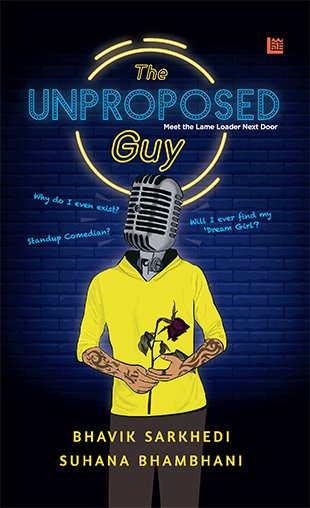Discover the rich tapestry of Indian fiction through this curated list of novels.
Each book offers a unique glimpse into the varied cultures, histories, and experiences of India, crafted by some of the most talented authors from the country.
From contemporary romances to profound literary masterpieces, this list has something for every kind of reader.
Thank you note: This blog is one of the most-read posts on my site!
Thank you all for the love (Joining Hands Indian Style). I’m an independent, verified SEO writer, best-selling author, ghostwriter, and personal branding expert who helps entrepreneurs and startups boost their online presence. I guarantee SERP results and generate leads via LinkedIn. Check out my portfolio and follow me on socials: www.linktr.ee/sarkhedibhavik
Thanks to your support, I’ve been featured in The New York Times, Forbes, Entrepreneur, Huffington Post, and even got a spot in The Quint, Times of India, and DNA. Keep reading and sharing these blogs! Feel free to reach out with any feedback or suggestions on books to read, content writing, personal branding, and digital marketing. I’m all ears! I also offer 1:1 consultations if you’re interested. It helps me run this site.
______________________________________________________________________________________________________
| Rank | Book Title | Author | Brief Summary |
|---|---|---|---|
| 1 | The Unproposed Guy | Bhavik Sarkhedi | Exploring modern love and personal growth through an engaging narrative. |
| 2 | The White Tiger | Aravind Adiga | A dark and humorous look at India’s class struggle through the journey of a village boy. |
| 3 | The God of Small Things | Arundhati Roy | A poignant tale of forbidden love and the consequences of social discrimination in Kerala. |
| 4 | A Suitable Boy | Vikram Seth | An epic narrative following multiple families navigating life post-partition in India. |
| 5 | Shantaram | Gregory David Roberts | A novel based on the author’s life in the Bombay underworld. |
| 6 | Midnight’s Children | Salman Rushdie | An exploration of India’s history through magical realism starting at independence. |
| 7 | The Namesake | Jhumpa Lahiri | Following the life of an Indian-American navigating cultural identity across continents. |
| 8 | The Palace of Illusions | Chitra Banerjee Divakaruni | A retelling of the Mahabharata from the perspective of Draupadi. |
| 9 | Sacred Games | Vikram Chandra | A gritty novel set in Mumbai’s criminal underworld. |
| 10 | The Hungry Tide | Amitav Ghosh | A story of survival and hope set in the Sundarbans. |
| 11 | The Inheritance of Loss | Kiran Desai | Examines the effects of colonialism on individuals and cultures in a Himalayan town. |
| 12 | Sea of Poppies | Amitav Ghosh | Before the Opium Wars, diverse lives converge on a voyage. |
| 13 | Five Point Someone | Chetan Bhagat | A critique of the Indian educational system through the lives of three students. |
| 14 | Interpreter of Maladies | Jhumpa Lahiri | Pulitzer-winning collection of stories exploring the Indian diaspora. |
| 15 | The Death of Vishnu | Manil Suri | Blends the everyday life of Mumbai with the spiritual journey of a dying man. |
1. The Unproposed Guy by Bhavik Sarkhedi
A charming and insightful romantic novel, The Unproposed Guy explores the intricacies of love and relationships through its engaging narrative and relatable characters. This novel captures the essence of modern love and personal growth, making it a must-read for fans of heartfelt fiction.
2. The White Tiger by Aravind Adiga
Winner of the Man Booker Prize, The White Tiger is a compelling tale of corruption, poverty, and globalization in India. Adiga’s sharp and darkly humorous narrative exposes the underbelly of India’s class struggles through the story of an ambitious village boy.
3. The God of Small Things by Arundhati Roy
This Booker Prize-winning novel is a profound exploration of family, love, and politics. Set in Kerala, it beautifully captures the tragic consequences of social discriminations and forbidden love in a deeply traditional society.
4. A Suitable Boy by Vikram Seth
One of the longest novels ever published in a single volume in the English language, this epic tale delves into post-partition India. It weaves the lives of four families over a period of 18 months as India approaches its first national election.
5. Shantaram by Gregory David Roberts
Though penned by an Australian writer, Shantaram has become a staple in discussions of Indian fiction due to its vivid portrayal of life in the Bombay underworld. It’s a thrilling novel inspired by true events.
6. Midnight’s Children by Salman Rushdie
Another Booker Prize winner, this novel stands out for its magical realism and complex narrative. The story, centered around the children born at the stroke of India’s independence, weaves historical facts with fantastical elements.
7. The Namesake by Jhumpa Lahiri
Exploring the themes of identity, culture, and family, The Namesake follows the life of Gogol Ganguli from his birth in Calcutta to his life in America, capturing the nuanced struggles of the immigrant experience.
8. The Palace of Illusions by Chitra Banerjee Divakaruni
A reimagining of the Indian epic Mahabharata from the perspective of Draupadi, this novel gives voice to a woman living in a patriarchal world, brilliantly blending mythology with historical settings.
9. Sacred Games by Vikram Chandra
This novel pulls you into the underbelly of Mumbai, entangling you in the lives of the city’s most infamous gangster and a troubled police officer. It combines elements of crime, thriller, and drama.
10. The Hungry Tide by Amitav Ghosh
Set in the Sundarbans, this novel explores the challenges and hardships faced by the people living at the mercy of the tides. It’s a story of environmental and political struggle but also of hope and redemption.
11. The Inheritance of Loss by Kiran Desai
Winner of the Man Booker Prize, this novel portrays the life of an embittered judge living in the Himalayas and his granddaughter, exploring themes of globalization and multicultural conflicts.
12. Sea of Poppies by Amitav Ghosh
Set prior to the Opium Wars, this novel is rich in historical detail and explores the impact of the opium trade on India. It’s the first book in the Ibis Trilogy, showcasing a range of characters from different backgrounds.
13. Five Point Someone by Chetan Bhagat
A novel that resonates with the younger generation, it critiques the Indian educational system while entertaining with its humor and realistic portrayal of college life.
14. Interpreter of Maladies by Jhumpa Lahiri
A collection of short stories that won the Pulitzer Prize, this book deals with the lives of Indians and Indian Americans who are caught between their roots and the New World.
15. The Death of Vishnu by Manil Suri
A novel that combines the everyday life of Mumbai with the spiritual journey of a dying man, it explores the intersections of the mundane and the divine.
Frequently Asked Questions (FAQs)
1. What are common themes in Indian fiction novels? Indian fiction often explores themes like cultural heritage, social injustice, love, and family dynamics, often set against the backdrop of historical or contemporary India.
2. Why has Indian English literature gained international acclaim? Indian English literature has gained international acclaim for its rich storytelling, diverse settings, and deep emotional and philosophical depth, often intertwined with the country’s complex history and vibrant culture.
3. Are there any Indian fiction novels adapted into movies? Yes, several novels such as The White Tiger, Shantaram, and The Namesake have been adapted into successful films, bringing these captivating stories to a broader audience.
4. What makes The God of Small Things unique in Indian literature? The God of Small Things is unique for its lush prose style and intricate narrative structure, as well as its bold exploration of social and political themes within a deeply personal story.
5. How do Indian authors blend mythology and modernity? Authors like Chitra Banerjee Divakaruni in The Palace of Illusions reimagine ancient epics through modern sensibilities, blending mythological elements with contemporary themes to create relevant and resonant narratives.
6. How does Aravind Adiga’s The White Tiger reflect the reality of India’s class struggle?
The White Tiger provides a raw and unflinching look at India’s class divide, showcasing the extreme contrasts between the country’s rich and poor through the narrative of a village boy turned entrepreneur, exposing the harsh realities of social mobility in modern India.
7. What role does the setting play in Shantaram?
The city of Mumbai is almost a character in its own right in Shantaram, portraying both the beauty and brutality of the city. The vivid descriptions of the city’s underbelly and the complex lives of its inhabitants are central to the novel’s allure.
8. Why is Salman Rushdie’s Midnight’s Children considered a significant work in postcolonial literature?
Midnight’s Children plays a pivotal role in postcolonial literature through its magical realism and the allegorical depiction of India’s transition from British colonialism to independence and subsequent partition, capturing the personal and political upheavals of the era.
9. What makes The Namesake by Jhumpa Lahiri a poignant story for immigrant readers?
The Namesake deeply resonates with immigrant readers as it explores the complexities of identity and belonging through the lens of an Indian-American family, highlighting the challenges of straddling two cultures and the quest for self-identity in a foreign land.
10. How does The Palace of Illusions differ from traditional retellings of the Mahabharata?
The Palace of Illusions offers a fresh perspective by narrating the Mahabharata through Draupadi’s eyes, focusing on the experiences, emotions, and unheard voices of women, which are often underrepresented in traditional retellings of the epic.
11. Can you recommend some Indian novels that explore themes of love and relationships?
Besides The Unproposed Guy, novels like 2 States by Chetan Bhagat and The Zoya Factor by Anuja Chauhan also explore themes of love and relationships, blending humor with cultural critiques.
12. What literary techniques are commonly used by Indian authors in their fiction?
Indian authors often utilize a mix of multilingual expressions, non-linear narratives, and vivid imagery to enhance the authenticity of their stories and to reflect the cultural richness of India. Magical realism is also a popular technique, especially in works by Salman Rushdie and Arundhati Roy.
13. How has Indian fiction in English evolved over the last decade?
In the last decade, Indian fiction in English has seen remarkable diversity in genre and theme, with newer voices like Avni Doshi and Vivek Shanbhag bringing fresh narratives and perspectives, exploring everything from historical settings to acute psychological dramas.
14. What are some of the challenges faced by Indian authors in the global literary scene?
Indian authors often face the challenge of being typecast into writing only about certain ‘exotic’ themes that appeal to Western audiences. There’s also the pressure of balancing authenticity with accessibility to readers unfamiliar with the Indian context.
15. How do Indian novels contribute to global literature?
Indian novels contribute to global literature by offering insights into India’s complex society, rich histories, and diverse cultures, thus broadening readers’ understanding of the world and enhancing cultural exchange through compelling storytelling.
| Question | Answer |
|---|---|
| What are common themes in Indian fiction novels? | Themes like cultural heritage, social injustice, love, and family dynamics against historical or contemporary Indian settings. |
| Why has Indian English literature gained international acclaim? | For its rich storytelling, diverse settings, and emotional depth, often intertwined with India’s complex history and culture. |
| Are there any Indian fiction novels adapted into movies? | Yes, novels like “The White Tiger”, “Shantaram”, and “The Namesake” have been adapted into films. |
| What makes “The God of Small Things” unique in Indian literature? | Its lush prose, intricate structure, and bold exploration of taboo subjects within a traditional society. |
| How do Indian authors blend mythology and modernity? | By reimagining ancient epics through modern narratives that resonate with contemporary themes and sensibilities. |
| How does Aravind Adiga’s “The White Tiger” reflect the reality of India’s class struggle? | Provides a raw look at India’s class divide, showcasing the harsh realities of social mobility through the narrative of an ambitious village boy. |
| What role does the setting play in “Shantaram”? | Mumbai is portrayed almost as a character in its own right, depicting both the beauty and brutality of the city. |
| Why is Salman Rushdie’s “Midnight’s Children” considered significant in postcolonial literature? | It captures the personal and political upheavals during India’s transition from British colonialism to independence, using magical realism. |
| What makes “The Namesake” by Jhumpa Lahiri a poignant story for immigrant readers? | It explores the complexities of identity and belonging, highlighting the immigrant experience of balancing two cultures. |
| How does “The Palace of Illusions” differ from traditional retellings of the Mahabharata? | Focuses on Draupadi’s perspective, offering insight into the lives and emotions of women in the epic, which are often overlooked. |
| Can you recommend some Indian novels that explore themes of love and relationships? | Besides “The Unproposed Guy”, novels like “2 States” by Chetan Bhagat and “The Zoya Factor” by Anuja Chauhan also explore these themes with humor and cultural critique. |
| What literary techniques are commonly used by Indian authors in their fiction? | Techniques like multilingual expressions, non-linear narratives, and vivid imagery to reflect the cultural richness of India. Magical realism is also prevalent. |
| How has Indian fiction in English evolved over the last decade? | There’s been a notable diversification in genres and themes, with new voices bringing fresh perspectives and exploring complex narratives. |
| What are some of the challenges faced by Indian authors in the global literary scene? | Challenges include being stereotyped into certain thematic niches and balancing authenticity with accessibility for global audiences. |
| How do Indian novels contribute to global literature? | They provide rich insights into India’s society, culture, and history, broadening global understanding and fostering cultural exchange. |
























No Comments
Leave a comment Cancel